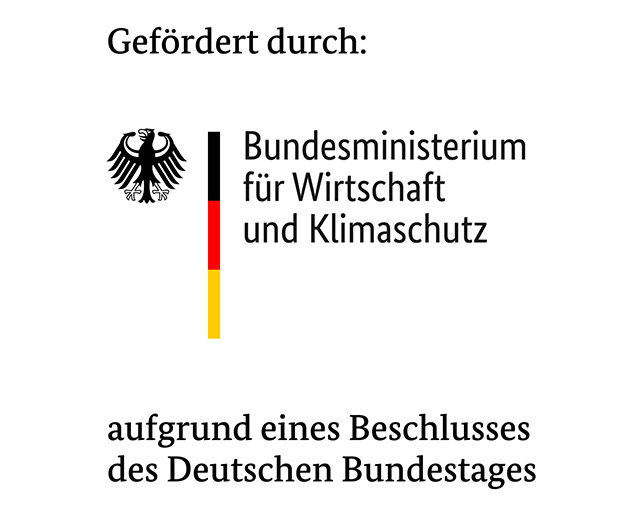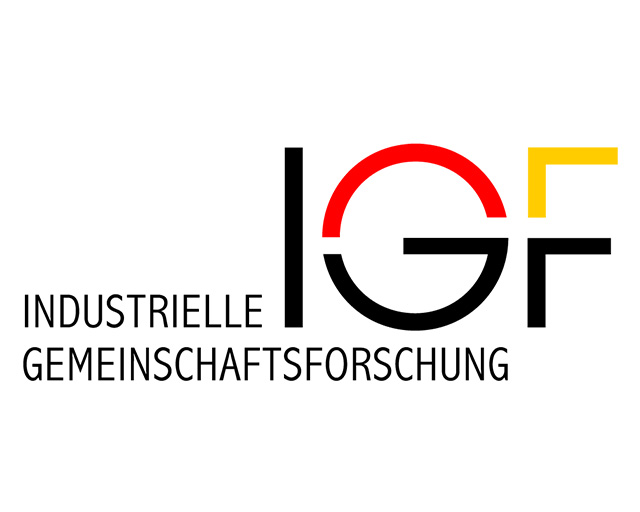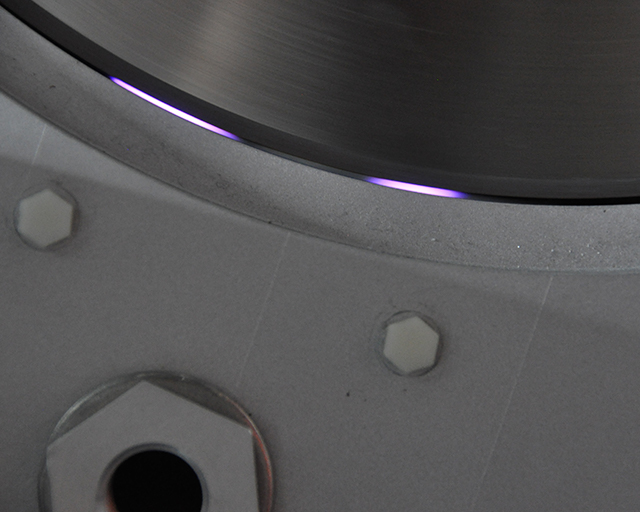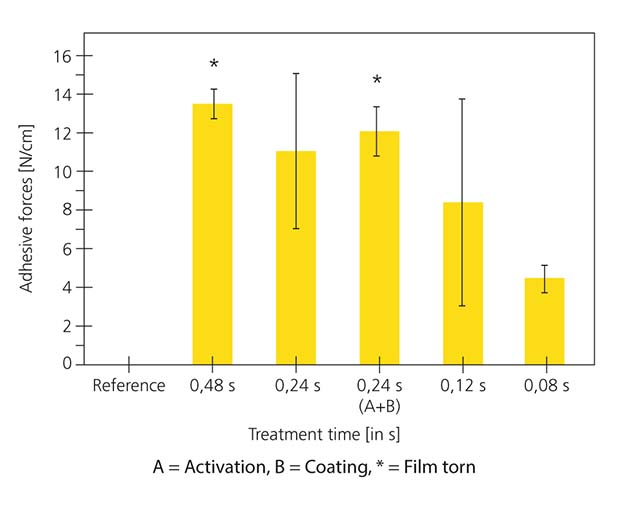
Adhesive-free joining of plastic-metal films

Innovative materials form the basis for modern industrial products in all areas of life. The market for products such as special films for food packaging, flexible printed circuit boards or decorative and protective films is expanding continuously. The challenge: These materials have to fulfill a multitude of requirements. They must, for example, be optically transparent, temperature-stable, easy to process, or permeable to oxygen and water vapor. When such complex functions are relevant, composite films are particularly suitable, as they are comprised of differing layers and therefore combine differing material properties. These composite materials often consist of plastics and metals and are bonded using differing adhesives, which results in undesirable side effects such as the consumption of large quantities of adhesive, a lack of long-term stability, a tendency to creep, and migration. The Fraunhofer IST is therefore working on a new adhesive-free low-temperature joining process as an alternative for the joining of plastic and metal foils made from aluminum and polyethylene.


Alternative for joining plastic and metal films
In the new adhesive-free, low-temperature joining process, thin layers are applied to the polymer and metal surfaces by means of atmospheric PECVD (plasma-enhanced chemical vapor deposition) in the form of a nanometer-thick “adhesive layer” which covalently bonds to the activated films. In a subsequent step, the materials are bonded using a thermocompression bonder at moderate pressure (1.85 N/mm2) and low temperature (< 100 °C). The best results were obtained when bonding polyethylene to aluminum with adhesive forces of more than 13 N/cm. Through optimal adjustment of parameters such as treatment time/rolling speed, precursor concentration, plasma power and film thickness, composites with high long-term stability can be produced.
Results
Using the approach described, it was possible to successfully deposit chemically reactive ultra-thin films which, after subsequent joining, can be utilized in the production of composite materials, e. g. from aluminum and polyethylene films. The following observations were made (see Figure bottom right):
- The composites exhibit high bonding strength and very good long-term stability.
- A strong influence of the layer thickness of the AP-PECVD coating on the bonding strength exists. The coating thickness can be achieved through treatment speed, doubling of the electrode system and by increasing the precursor concentration.
- Activation by means of air plasma prior to coating (A+B) leads to increased bonding forces up to cohesive failure (*) of the film and significantly increases the reproducibility.
- In the pre-treatment process, a higher dosage of corona discharge leads to a further increase in bonding strength and reproducibility through cleaning, activation and etching processes.
- An oxygen-free atmosphere between pre-activation and coating supports adhesion.
- There exists a strong influence of the storage time of freshly treated films before joining between coating and bonding.
Outlook
In the future, the results are to be transferred to a combined roll-to-roll process, in which both coating and joining take place, and to other material combinations, in particular to future-oriented bio-based materials such as polylactides (PLA), bio-polyethylene and cellulose-based polymers.
The project
The project “Entwicklung eines kontinuierlichen Rolle-zu-Rolle-Verfahrens für das klebstofffreie Niedertemperaturfügen von Kunststoffen mit verschiedenen Materialien” (Development of a continuous roll-to-roll process for the adhesive-free low-temperature joining of plastics with various materials) NTF4R2R with a duration of 01.06.2017 to 30.11.2019 was funded under the grant number 19571 BG within the framework of the program for the promotion of joint industrial research (IGF) by the German Federal Ministry for Economic Affairs and Energy based on a resolution of the German Bundestag.


This article is part of the annual report 2020.

